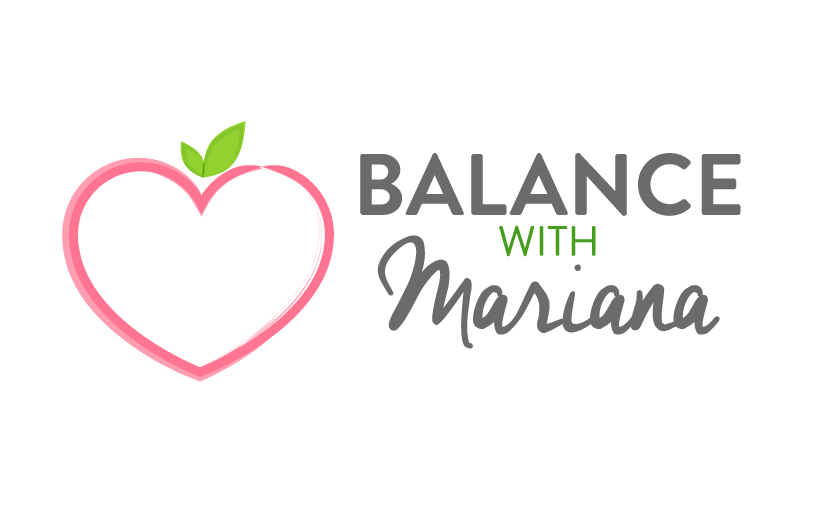I recently published on the amazing tool of Cycle Syncing which involves tailoring your food and lifestyle habits to the different phases in your menstrual cycle - to capitalize on our fluctuating hormones and help minimize any period problems, and generally to help achieve optimal health (primarily for menstruating women).
Within the beautiful art of cycle syncing, I mentioned both Seed Cycling and Tea Cycling; so today I’ll be explaining these a bit further.
WHY SHOULD WE TRY SYNCING WITH OUR CYCLE?
Women’s hormones are part of a complex system that is easily influenced by our diet, exercise, sleep, stress and toxins. Any of these factors can throw our hormones out of balance and contribute to common “health issues” such as irregular or missing periods, acne, PCOS, thyroid disorders, fatigue, very strong “PMS” symtoms, and more.
While we often benefit from medications to help with symptoms, there is a lot we can do with just our diet and lifestyle to help bring our hormones back into balance in a more organic way. Even if we do decide that we do need meds, we should still accompany our treatment with “natural” tools that can support our body’s natural balance. I can’t say it enough, but FOOD (in combination with healthy lifestyle practices) really is often our best medicine!
Both Seed cycling and Tea cycling are 2 of the easiest ways we can help support our hormones in a gentle way (especially when combined with other diet/lifestyle habits to support hormonal balance). The idea is to use different seeds and teas to help support our hormones in the different stages of our cycle to help regulate our cycles and minimize PMS. It can also be beneficial for women with PCOS and women trying to get pregnant naturally.
SEED CYCLING 1O1:
Seed cycling involves having ground flax seeds and pumpkin seeds daily in the first half of your cycle, then ground sunflower and sesame seeds in the second half of your cycle.
Days 1-14: during menstrual and follicular stages (approximately days 1-14) you have a combination of ground flax and pumpkin seeds, 2 tablespoons daily.
Days 15-28: during ovulation and luteal stages (approximately days 15-28/30) you have a combination of ground sesame and sunflower seeds, 2 tablespoons daily.
WHY THESE SEEDS?
During the first half of our menstrual cycle (menstrual and follicular phases), the consumption of pumpkin seeds and flax seeds help support our rising estrogen levels while preventing excess estrogen. Flax seeds are considered phytoestrogens (supporting healthy estrogen production) and contain lignans which bind to excess estrogen. Pumpkin seeds are high in zinc which helps support progesterone production as you move towards the progesterone rise in the second phase of your cycle.
During the second half of our cycle (ovulation and luteal phase), sesame and sunflower seeds are said to help boost progesterone production. Sunflower seeds are high in vitamin E and selenium. Vitamin E can help boost progesterone production, while selenium helps detox the liver of excess estrogen. Sesame seeds are a rich source of zinc which help boost progesterone production and contain lignans that help block excess estrogen while progesterone rises.
MY TIPS:
I recommend buying the seeds whole then grinding them, and keeping the ground mixture in the fridge, because they last longer that way and tend to retain more properties (they oxidize quicker once they’re ground).
The way I do it and recommend is: day 1 of your cycle (first day you bleed) mix 14 tablespoons of whole flax seeds and 14 tablespoons of whole pumpkin seeds, grind them, then store in a mason jar in the fridge. Day 14 prepare your mixture for the second half – take 14 tablespoons sesame seeds and 14 tablespoons sunflower seeds, process them, then store again in a mason jar in the fridge. I find it easiest to do it this way!
HOW TO:
To consume them, I suggest adding them to your smoothies, chia pudding, yogurt, oats or even tossing on bowls and salads. You can also have them straight up of course (like a small snack between meals!). Personally I love making my own granola and energy balls, so I also do a batch of granola and energy balls using pumpkin and flax for my Follicular phase, and then again during ovulation do a batch of granola and energy balls for my Luteal phase with sunflower and sesame seeds. If I have leftovers I store in the fridge for next cycle!
TEA CYCLING 101:
Tea cycling involves having different teas daily in each of your menstrual phases:
Menstrual (days 1-5 or while you’re bleeding and spotting): Have a cup of RED RASPBERRY LEAF daily to support iron levels. I also suggest adding GINGER TEA especially if you have any cramping. Ginger tea is an excellent accompaniment to this phase as it warms us up and helps boost circulation when we could be otherwise a bit stagnant. It is also an excellent anti-inflammatory which can help relieve pain symptoms. As a third tea, it can be helpful to continue with Chamomile tea for its relaxing, comforting properties.
Follicular (days 6-13 approx.): Have a cup of NETTLE TEA daily. I also like to add here GREEN TEA (especially matcha) given its antioxidants (to help detoxify) and it gives us fuel without the jolt/adrenaline that we can get from coffee.
Ovulation (days 14-16 approx.): Have a cup of DANDELION TEA daily. I also suggest adding PEPPERMINT TEA for its cooling properties (as I mentioned in my Cycle Syncing blog, ovulation is like summertime!), plus it aids digestion (we can sometimes experience some digestive issues like constipation during ovulation) and it can help relieve any ovulation cramping.
Luteal (days 17-28 approx.): Continue having a cup of DANDELION TEA daily. I also suggest adding CHAMOMILE TEA here as it is calming and soothing to the nervous system which helps us as our body is preparing for menstruation. It also aids digestion which can be sluggish when progesterone is high.
MY TIPS:
Tea cycling like seed cycling works best if we’re consistent and do it for months in a row, so I suggest buying teas in bulk. For better quality and eficacy, definitely buy organic.
I personally love roasted dandelion tea and add a little bit of almond milk and/or creamer like nutpodz and it’s delicious; somewhat like coffee (without the caffeine nor acidity!). I often to the same with my chamomile tea and nettle tea and they’re delicious.
HOW TO:
I like to have my teas after lunch and dinner every day (as in the morning I personally have my matcha regardless of my phase), so I add these teas as part of my “dessert” after meals together with my seed-cycling energy balls or granola!
OTHER QUESTIONS/ TIPS:
To maximize this process and make it work for you, its important to TRACK YOUR CYCLE. Tracking your cervical fluid and your basal temperature when you wake up are 2 easy, free and effective ways of helping us track when we’ve ovulated. There are also TONS of apps nowadays (some with wearables that can sync to the app) to help you track your cycle.
If you don’t currently have a cycle (amenorrhea) you can still try seed and tea cycling by syncing with the moon cycles. Use the New Moon as the beginning of a new cycle (day 1) and the Full Moon would be equivalent to ovulation or Day 14. If you continue this consistently for a few months together with other supplements (such as Vitex, Omega-3, a high quality multivitamin with methylated b vitamins) and other targeted food/lifestyle changes (no processed nor diet foods, no over-exercising, plenty of stress management tools, etc), it’s been proven to help many women restore their cycle.
If your cycle is not 28 days (maybe its 25 days or maybe its 32 days) that’s ok, you can just adjust slightly to your cycle. Day 1 of menstruation you start with pumpkin/flax and menstruation teas, as soon as you’re done menstruating you start follicular phase teas, continuing with pumpkin+flax seeds), then as soon as you ovulate (you’d need to track ovulation) you switch to the sunflower and sesame seeds and start the ovulation teas for 3 days then incorporate the luteal phase teas until you start bleeding again.
Another option if you feel your cycle is too short/too long is to do the cycling for exactly the 28 day cycle (14 days pumpkin and flax, 14 days sunflower and sesame, and follow my guide for teas; days 1-4 menstruation teas, days 5-13 follicular teas, days 14-16 ovulation teas and days 17-28 luteal teas) then start again. A few months of this should help regulate your cycle bringing it closer to the 28 day cycle…but you have to believe in the process, be patient and be very consistent!
IMPORTANT DISCLAIMER
There is not enough scientific research/data to prove the effectiveness of seed cycling nor tea cycling, but as long as you tolerate the seeds and teas, there is no downside and there is definitely upside! From experience with my clients that experimented with seed cycling over a few months, they did experience less cramping during ovulation and less PMS symptoms. For me, in combination with other things (metformin, vitex and cycle syncing in general) it’s helping me restore my period. Plus these seeds have amazing properties that help with hormonal health in general. For example:
FLAX SEEDS are extremely rich in fiber and nutrients in general, including omega-3s. Flax seeds contains phytoestrogens and lignans, plant compounds that are believed to weakly mimic some effects of human estrogen, so can support our estrogen production. Some studies also show that consuming flaxseeds can help promote regular ovulation
PUMPKIN SEEDS, like flax seeds, are high in lignans, and also high in zinc. Some studies show zinc can help with decreasing menstrual cramps as well as promote ovulation. They help with production of estrogen (as well as detoxifying excess estrogen).
SUNFLOWER SEEDS are rich in vitamin E and helps support production of progesterone.
SESAME SEEDS are rich in vitamin E that help support progesterone, and some studies show they help decrease androgens and increase sex hormone binding globulin (SHBG). They also contain lignans that help reduce excess estrogen.
GINGER, PEPPERMINT, CHAMOMILE TEA: all help with digestion. Ginger also helps “warm” your body during menstruation, Peppermint tea helps “cool” your body during ovulation, and Chamomile tea is soothing, helping to reduce cramps in late luteal and menstruation phases.
DANDELION TEA, NETTLE TEA: are both detoxifying and anti-inflammatory, and nettle tea in particular has been said to help with fertility and with blood circulation.
RED RASPBERRY LEAF TEA is rich in nutrients like iron, so great to help replenish nutrients lost with menstruation.
So if you’re looking to connect more with your fluctuating female body, and to better improve your hormonal balance and any period symptoms, I highly recommend giving seed and tea cycling a shot! Please let me know how it goes!



